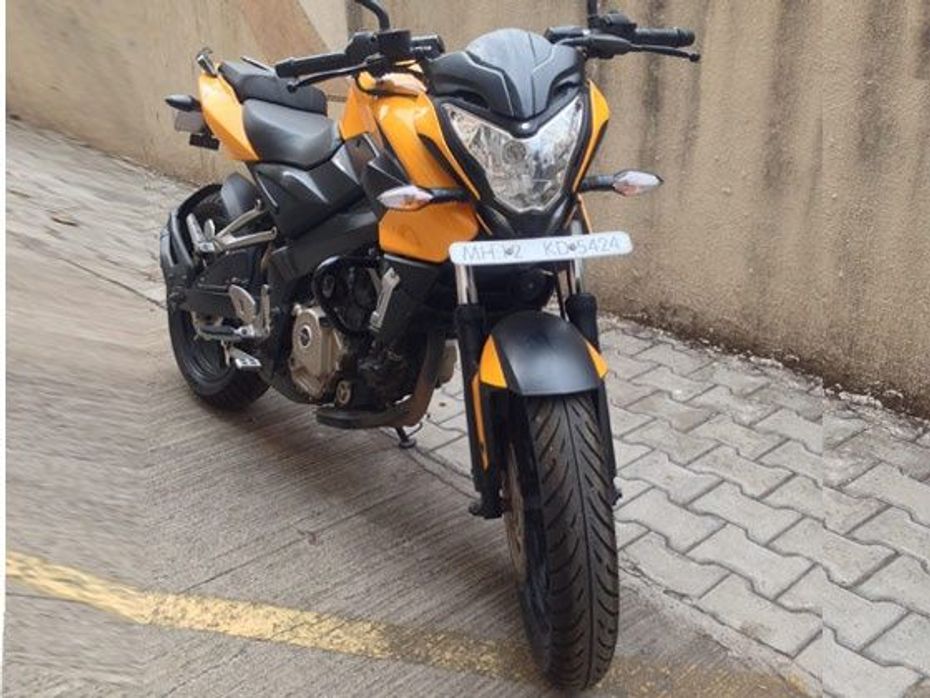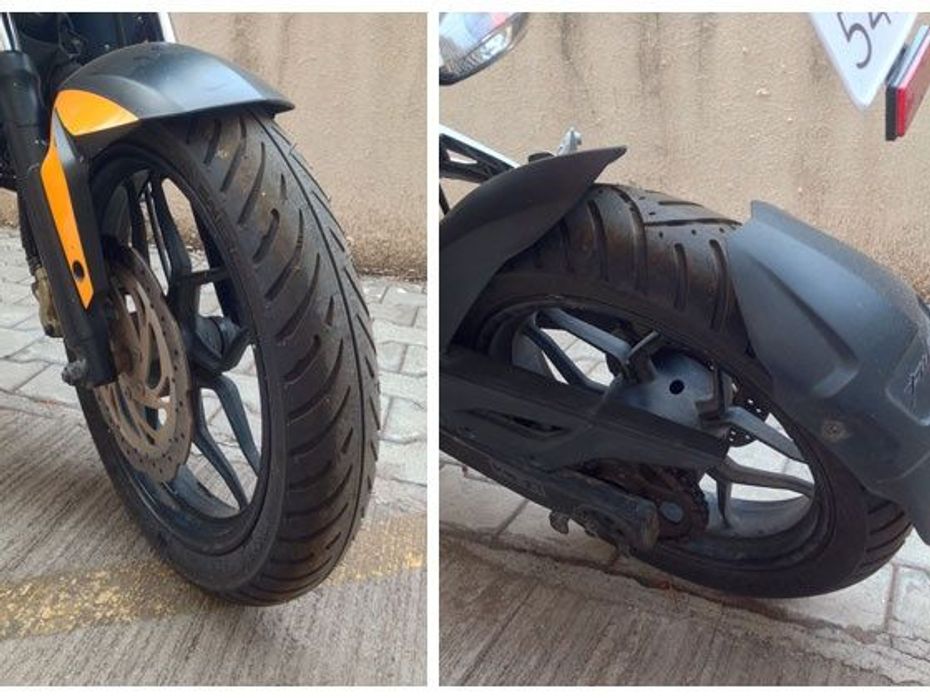Explore all New Cars of 2024
 Lamborghini Urus SE Plug-in Hybrid Revealed: Top 7 Highlights
Lamborghini Urus SE Plug-in Hybrid Revealed: Top 7 Highlights


As one grows older, the receding hairline brings with it years of enriching experience. And you can safely go with my instincts when I say that new, modern tyres can definitely be trusted compared to old, worn-out ones. This, of course dawned on me after a couple of interesting front-wheel slides.
So when the time came for me to bid adieu to my Bajaj Pulsar 200NS’ stock, I did a little bit of R&D before replacing them. And I realized that the one pertinent thing you need to ask yourself in the beginning is — what do I use the bike for and how do I expect the bike to perform.
I primary use the 200NS for commuting, so obviously I was looking for reliable street-oriented tyres, designed for a fairly power street bike which is capable to take on a bit of dirt and gravel.
I opted for one of the most popular tyre options for small-capacity performance motorcycles in India -- the MRF Zapper. The main reason for going with the MRFs was that the tyres offer tread, that’s reasonably aggressive to grip anything you might encounter on the roads, yet wears gradually enough to last a while.
The other major attraction was its affordable price tag compared to the offering of other big international players. The rear MRF Zapper Q Tubeless 130/70 17 tyre costs about Rs 2,205 in Mumbai; while the front 100/80 17 will set you back by just Rs 1,575. A pair of good rubber for under Rs 3,780 sounds like a deal to me. (Note: Prices mentioned are without any taxes)

With time, and roughly about 15,000 km, the OEM tyres made the bike steer like a video game. Mainly because they had become harder and didn't have adequate grip. Getting used to the extra grip and applying more pressure on the bars took about 3 minutes to get used to. And what a world of a difference the new MRF Zapper tyres have made to the bike.
The bike’s been running on the MRF Zapper for roughly 500km, and it has transformed the braking, handling and wet grip. The bike is so much better than it was previously and inspires much more confidence. I wonder why Bajaj doesn’t offer the Pulsar NS200 with the MRFs as standard, as the poor OEM tyres are its Achilles’ heel.
The bike now claws on to the tarmac and gravel with equal zeal, giving me the confidence to lean more into corners, overtake cars and buses even over a bit of loose gravel. It does help me carve a pretty neat apex on the tarmac, but it’s not as sticky as the more expensive international tyres available in the market now. And, for that very reason (not being as sticky); the MRF Zapper is expected to last me much longer.
During the week it does take on rutted and pot-holed ridden roads without much complain and still has plenty of grip to explore the hills around Pune city, over the weekends. The center rib on the front tyres deep treads on the rear ones, offering good wet weather grip. Since I’ve fitted the MRF Zapper, there’s one less reason not to ride in the rains. So, dear rain god, bring it on.
Good: Tarmac and wet road grip, the price.
Bad: Not a lot, and probably why MRF Zapper is one of the best selling aftermarket road tyres in India. They are really are that good. At least for the speed this bike is capable of.
India's largest automotive community